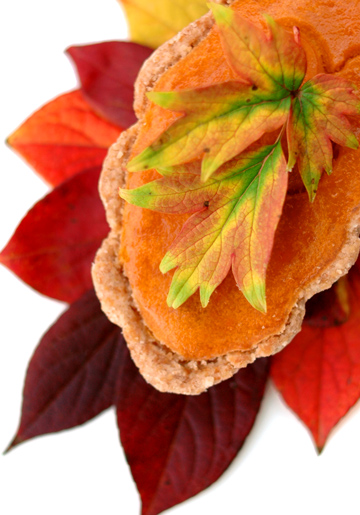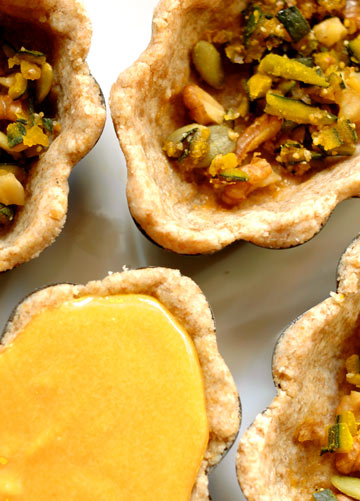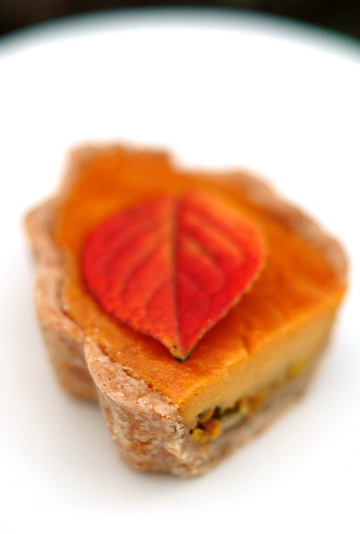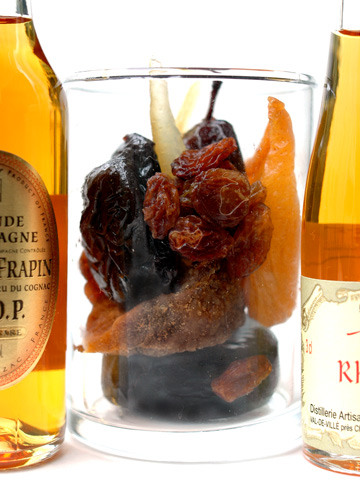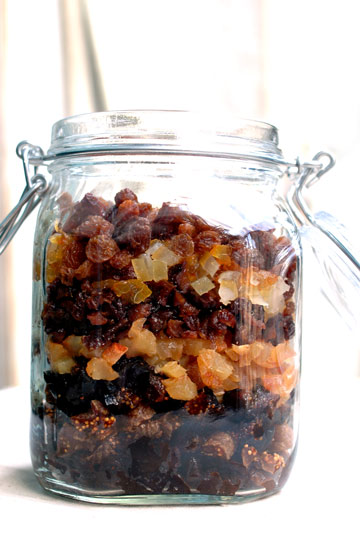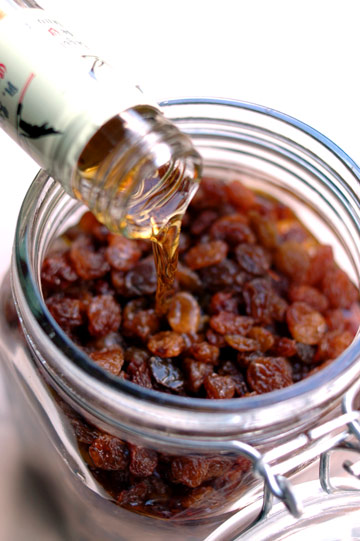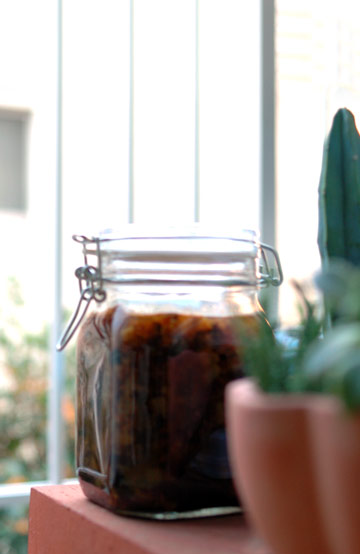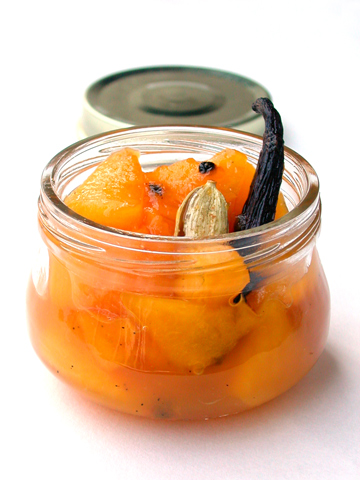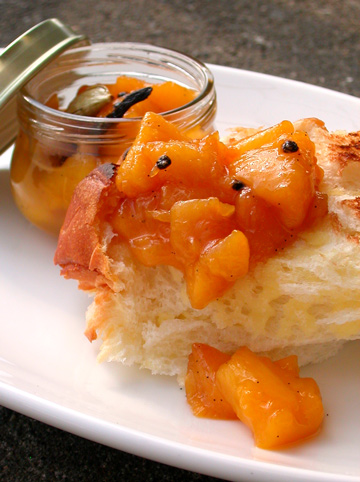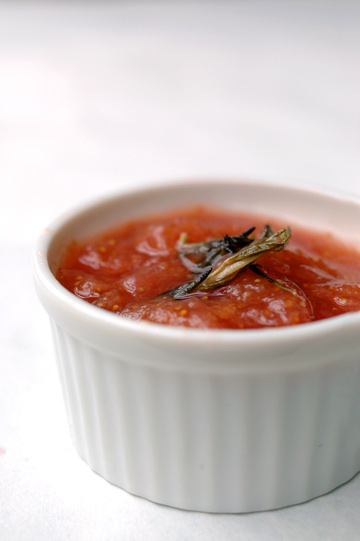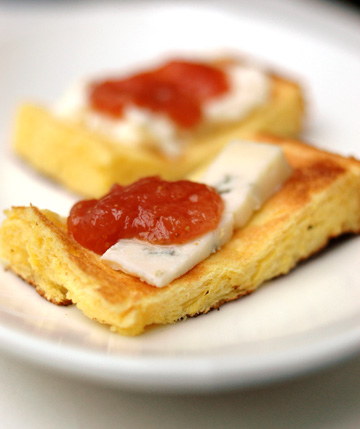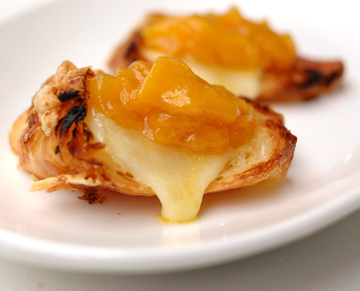
I seem to have a passion for figs. It is an acquired love, and the acquisition occurred to me relatively recently; figs were one of the few fruits that I disliked as a kid, and it wasn't until I when grew up to my early twenties that I discovered the beauties of this ancient fruit. And once it happened, I have grown to love figs more and more, to the point where I'd buy a whole lot of fresh ones and try ten different recipes within one season. Here follows the list.
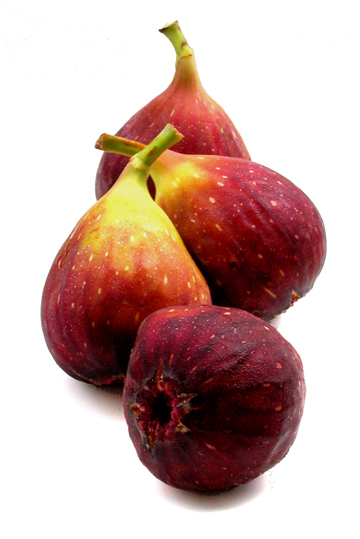
In my limited experience, I didn't see fresh figs very often in store in the US - well, at least not in my town on the Big Island of Hawaii. I remember I had Black Mission with a purple skin, and probably Brown Turkey with a brown skin. Other than that, I did see green Kadota and yellowish Calimyrna, but didn't try them myself. Here in Japan - at least in Tokyo area which I know of -, figs are ubiquitous from late August through early October, although there seems to be only one kind available here; one that looks very much like Brown Turkey. And they aren't exactly cheap even at the height of the season.
Anyways, I bought my first basket of the season towards the end of August and made some into
roasted fruit galettes along with several other fruits. The next thing I laid my hand on was tart.

Or should I call them tartelettes, since I made several small tarts? Either way, I already knew I was going to love it when I first saw the
recipe of
Fresh Fig Tart with Rosemary Cornmeal Crust and Lemon Mascarpone Cream, and so did I, as it turned out; when I love figs, I love rosemary, I love lemon and mascarpone, how could I have possibly gone wrong?
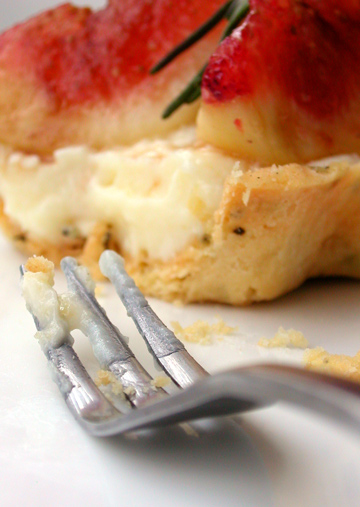
Made on light tart shells filled with airy cream and loaded with sweet fresh figs, these were truly a standout, a perfect light dessert. I made honey graze using Balsamic vinegar instead of red currant jelly, and it worked quite well. We all loved them.
I can't keep track of what I made in chronological order, but the next thing probably was this one:
Figs on Toast with Cheese.
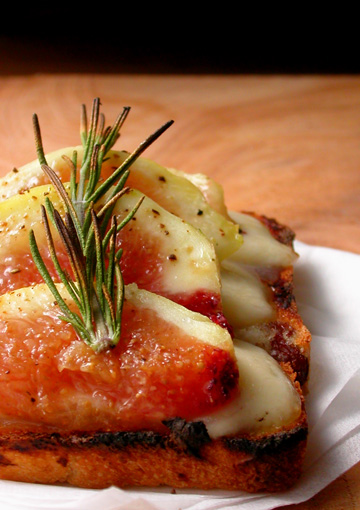
This was based on something I learned from my friend Mariko and would make a lot for breakfast - toast with cheese and fig jam. Originally, Mariko got this recipe for hot-pressed sandwich, but I didn't - and still don't - have a sandwich iron, so just made toast.

This time I used fresh fig wedges and mozzarella cheese, and a rosemary twig on top to add the scent. With a slice of French bread with nuts and fruits, this made lovely breakfast bites within minutes.
By now you might have noticed that I have a soft spot for the particular combination of figs and rosemary. I do, I do! I could have put rosemary in all these fig things, seriously, but I resisted for the sake of variations. Well, I didn't with this one -
Fig & Rosemary Yogurt Cake.

Yogurt cake, or gâteau au yaourt, is a traditional French home-baker-friendly cake that is really easy to make. To be authentic, you are supposed to use a small container or two of yogurt for one batch, then use an emptied container to measure all other ingredients. Sounds like a bit of fun!
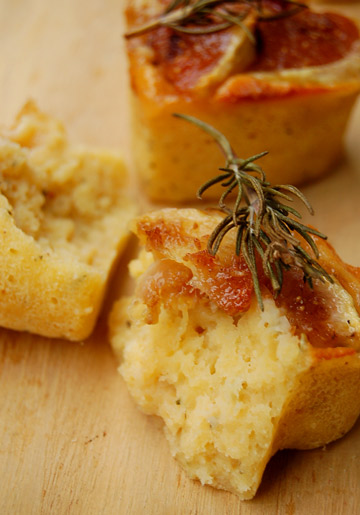
I wasn't exactly authentic in that regard, but it was fun to make nevertheless. I added some finely chopped fresh rosemary leaves to the batter and baked with chunks of figs inside and slices on top. It was a breeze to make and easy to love, a simply good nosh.
I like baked or roasted figs, but wine-poached ones are also a classic. While they'd typically be poached in red or white wine, here I used sweet white wine made from muscat, called Beaumes-de-Venise, using this
recipe for
Figs Poached in Spiced Sweet Wine.

Other than the unconventinoal use of sweet wine, what caught my attention with this recipe was the wide variety of spices and herbs put into the wine. Cinnamon, anise, and bay leaves may be common, but how about ginger, cardamom, black peppercorns and thyme? Sounds gorgeous, doesn't it - and it really was! And I don't even like star anise - actually, I positively hate anything anise-y, but here I brought myself to use not one but two of them, hoping that it would fuse together with other spices and help create a nuanced taste. It did.

I cut the amount of sugar to add and instead used a little honey in the wine mixture. Probably because I peeled figs before putting them into the liquid, the whole thing got tinted with pink after sitting overnight in the fridge. I simply served fig halves with plain mascarpone cheese with a few fresh grinds of black pepper, and it made indeed a sublime dessert. By the way, I poached pear wedges in the same pan, and they turned out lovely, too.
Now I was left with some leftover wine syrup after the fruit compotes, and wouldn't dare to waste any bit of it - it was a concentration of good sweet wine and spices! So I decided to recycle the syrup in other desserts, including this
Fig Cake with Olive Oil and Sweet White Wine.
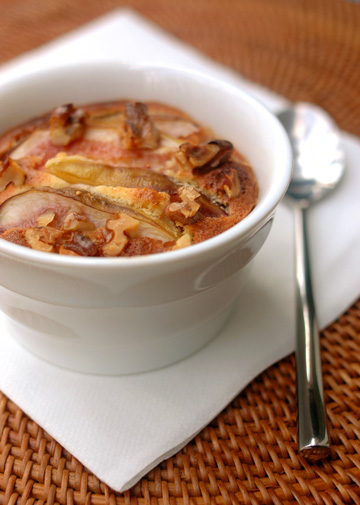
I chose to try this recipe because it uses both fresh figs and sweet white wine, but it also calls for olive oil for the batter. Come to think of it, when I've made olive oil and sweet wine cake
before - I wonder if it is common to pair these two?
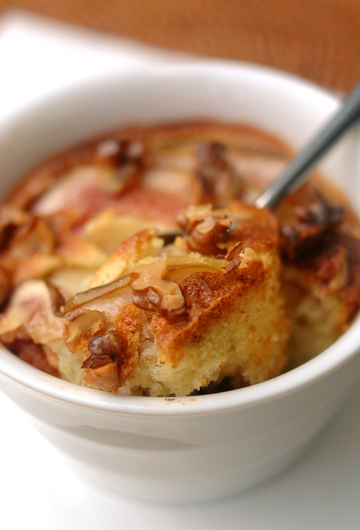
For this one, I put chunks of fresh figs in the batter, much like the yogurt cake above, but the this one turned out quite different from the other. Contrary to the moist yogurt cake, this one was crunchy on the surface and light, almost buttery, and resembled quatre quarts, a French version of pound cake, as one reviewer commented. But I didn't taste very much of sweet wine - not a surprise though, considering the small amount of it called for in this recipe.
So I still had quite a lot of the wine mixture left, and I used some more in another thing - using figs again, but here both fresh and dried ones.
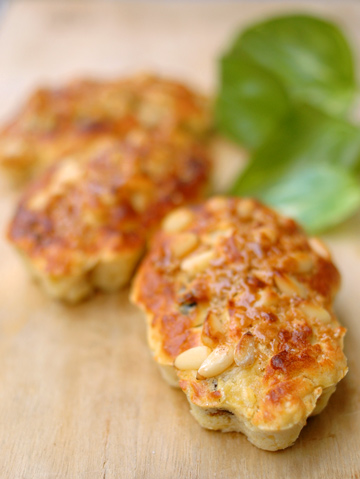
It was called something like
gateau deux figues, or
Double Fig Cake, but I am not sure, as I only took a mental note of the recipe when I was flipping through a recent issue of
ELLE a Table magazine at a bookstore. This one isn't using olive oil like the other one but regular butter, so it was pretty ordinary cake batter except it uses sweet wine. Oh I omitted anise liquor though; the wine mixture already had some of it, so it was enough for me. I used pine nuts in place of almonds like the recipe says, by the way.

Again, I couldn't trace the flavor of spiced sweet wine with this one. I couldn't taste fresh figs much, either - I might have used overripe figs and they might have gotten blended into the batter, perhaps. The cake was decent - nothing really special.
Okay, we're almost done with the fig thing now. Almost. Here I wanted to give mention to one little thing on a final note...

I've had the pleasure of working for a project by the government of
Fukuoka Prefecture, a province located in the Southwest Japan with the nation's 9th largest population out of 49. As part of the promotion of their agricultural produce, they've been promoting figs for exporting, and have been making promotional materials including this little leaflet (currently in English and Japanese, and possibly in Chinese and/or other languages in the future). I was asked to provide some recipes using fresh figs with pictures, as well as to help design the brochure - and the first contact was through my
little Japanese blog! I was absolutely thrilled, and it was a whole lot of fun, even with some challenges, which would always come along with any business in a certain way.
For this brochure I made five fig recipes from simple and classic Figs with Prosciutto to a little more time-consuming but all-worthy Roast Pork with Figs. I cooked and fed myself a lot of figs for this - for business! This wasn't my first time writing recipes, cooking dishes and shooting pictures on business, but it certainly was for Japanese media. I'd like to thank people who have taken a look at my blogs and offered me a job of any kind, and those who have in any way supported me in doing this - blogging, in English and in Japanese - including you, who are now reading this. Thanks!
So, this was my sweet affair with figs in season. While I've also made fresh fig jams a few times (such as the one included in
this post), I enjoyed my last few figs of the season plain. Admitted, I love figs baked, roasted, or poached, but fresh ones have got their own unique beauties.
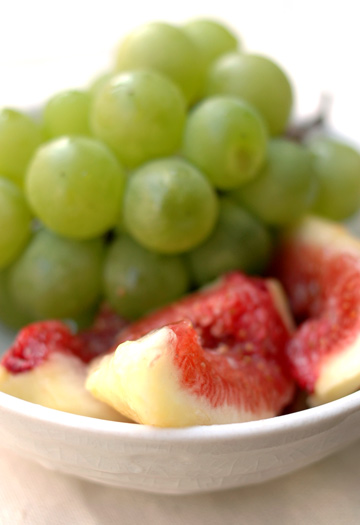
Well, I've still got a bunch of fresh fig recipes I have bookmarked but have yet to try in this season - for these I've got to wait till next summer, but in the meantime, I will come up with a bunch others using dried figs! (And hopefully, in the future I don't want to have to cram this much thing into one post but will be able to simply blog at shorter intervals....)
